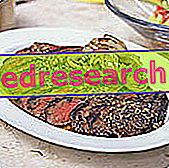Protein structure
Proteins are formed by the union of simpler molecules called amino acids that bind together through peptide bonds. Two amino acid molecules form a dipeptide, three a tripeptide and so on. We talk about polypeptide when this chain is made up of less than 100 amino acids and proteins when the number of individual units exceeds this threshold.
In the human body we can recognize about 50, 000 different protein molecules, whose function is determined by their amino acid sequence. Through a series of reactions our body is able to autonomously synthesize the proteins it needs from the single amino acids contained in the food.
Since the proteins are too large to be absorbed as such and transported into the circulation, some enzymes present in the lumen of the gastrointestinal tract intervene in their digestion by breaking them down into individual amino acids.
Protein digestion
During the digestive process most of the proteins are completely reduced in individual amino acids. The digestion of these macromolecules begins in the stomach where the combined action of pepsinogen and hydrochloric acid leads to the formation of oligopeptides (short chains of amino acids formed by less than ten units).

Protein digestion is completed by intestinal proteases of pancreatic origin (poured into the duodenum) and produced by the membrane of the same intestine (placed on the brush border). For this reason, protein digestion is normal even after surgical removal of the stomach.
Proteases are divided into endoproteases (hydrolyze the peptide bonds within proteins: chymotrypsin, elastase, trypsin) and exopeptidase (hydrolyse the terminal amino acid of the protein: carboxypeptidase, aminopeptidase, dipeptidase).
At the intestinal level, protein digestion is completed and the individual amino acids, dipeptides and tripeptides, can be absorbed and transported to the liver by specific carriers. After reaching this large gland, the individual amino acids can:
- be used as such to perform particular functions (involved in the immune response, in the synthesis of hormones and vitamins, in the transmission of nerve impulses, in the production of energy and as catalysts in many metabolic processes)
- participate in protein synthesis, a reverse process to the digestive process that aims to provide the body with materials for the growth, maintenance and reconstruction of cellular structures
- if present in excess they are used for energy purposes (gluconeogenesis) or converted into fat storage.
A small amount of protein in food is not absorbed and is eliminated as such with faeces (5%). Some peptides formed by more than three amino acids are absorbed by transcytosis and as such can represent a significant factor for the development of food allergies and intolerances.
Only in the newborn is it possible to absorb whole, undigested proteins. This phenomenon is fundamental for the absorption of antibodies transmitted through breast milk.

Second part "



